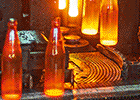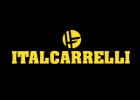Skyscrapers are distinctive landmarks in the cities of this world. They owe their charisma and lightness mainly to glass as a construction material. Glass creates impressive panoramas, allows maximum daylight to enter and is relatively affordable.
Principal Tower makes its mark
The Principal Tower, completed in mid-2019 on the edge of London’s trendy Shoreditch artists’ district, makes an impressive mark on the city’s skyline with its 162 metre-tall, elegant glass façade and its 50 storeys.
Designed by Foster + Partners, the floors hang like transparent layers between the delicate, horizontal façade bands that mark the individual levels. Here, too, the extensive use of glass in the outer skin is vital to this filigree look. Given the structure’s dimensions, every detail of the highly energy-efficient curtain wall façade had to be planned – right down to the spacer bar.
After all, this invisible construction element plays an important role, especially in the construction of generously glazed skyscrapers. It improves the insulation effect at the edge of the insulating glass panes and keeps them at a constant parallel distance from each other.
The persons responsible for planning therefore decided to use the Warm Edge spacer bar SWISSPACER ULTIMATE to construct the façade glazing. Thanks to its special gas and vapour-tight foil, this space bar prevents the gas filling from leaking out of and water vapour from penetrating the space between the panes. The approximately 300 residential units in the Principal Tower are also optimally thermally insulated thanks to the Warm Edge spacer bar for double glazing units. This delivers a significant reduction in energy costs and increases comfort levels in the rooms: Draughts caused by the sinking of cold air or the formation of condensation on the panes are thus effectively avoided.
Balancing pressure at great heights
The trend towards ever taller buildings continues unabated around the world: The tallest building on the planet at present, the 828 metre-tall Burj Khalifa in Dubai, will be topped in a few months’ time by the Jeddah Tower, which has a planned height of 1007 metres.
When glass façades reach these kinds of heights, architects and structural engineers are faced with increasing challenges. One of the reasons for this are the large air pressure and temperature differences that exist between the bottom and top of the building, which can lead to different climate loads on the insulating glass panes. As a consequence, the individual panes tend to bulge outwards at great heights. In cold weather, the opposite effect happens and the panes bend inwards.
The more varied the climate loads in a skyscraper, the more this impairs the appearance of the building’s façade. Apart from looking unsightly, the tensions in the edge seal can lead to a loss of quality and may even cause the glass to shatter. Replacing damaged panes is associated with extreme effort and costs to match, especially in very tall buildings.
SWISSPACER Air: The unique solution for tall buildings
SWISSPACER has developed an economical, industrial solution to this problem. A small, cylindrical metal sleeve with integrated membrane, the SWISSPACER Air, can be screwed invisibly into the spacer bars between the glass panes. The component enables the slow equalisation of over- or underpressure, thus counteracting climate loads. On the one hand, this ensures the quality and lifespan of the installed window and façade elements.
On the other, it simplifies the logistics in the construction process, because differences in height between the place of manufacture and use or along the transport routes can also produce stresses in the insulating glass and cause damage to the edge of the glass. In the case of insulating glass units that are fitted with SWISSPACER Air, any differences in pressure are continuously equalised to ensure that the building elements arrive on the construction site with no loss of quality. That is a decisive advantage, especially when using large quantities of components for skyscrapers.
SWISSPACER products can be found in many well-known skyscrapers around the world – such as in the façade of the MoMA in New York, in “The Gherkin” in London, in Madrid’s Torre de Cristal or in the Turning Torso in Malmö. The SWISSPACER Air components licensed by DIBt open up new possibilities for the planning, design and construction of future glass giants in a very relaxed way.


























